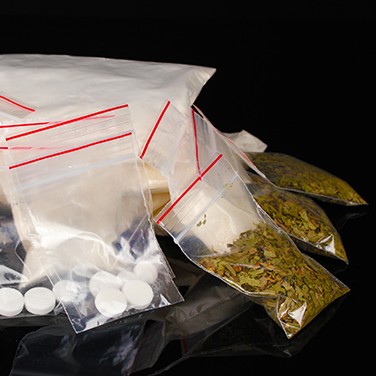Handheld Analyzers Make Drug Identification Safer
By Rita Waimer
The world of illicit drugs has changed immensely over the past 30 years. In the past, only a few substances were sold on the street — namely marijuana, cocaine, heroin and methamphetamine — and they were all easy to visually identify. Today, there’s a far larger variety of drugs to be found, and most of them are white powders. Cannabinoids (like K2 and spice), cathinones (like bath salts), opioids (like fentanyl and W-18), and hundreds of other new street drugs are indistinguishable in appearance and can pose a threat to law enforcement officers.
The methods for identifying these drugs have, of course, also advanced with time. Police departments once used wet chemistry tests to identify substances in the field and bulky, expensive equipment to run tests in the lab. While both methods worked, neither was ideal: the chemistry tests required large samples (which could have affected the amount for which a trafficker was charged), and the lab tests could only be run by trained technicians. Today, officers can use a portable, handheld device to scan, identify and log illicit substances quickly and safely from anywhere.
The Handheld Alternative
One common device is the Thermo Scientific TruNarc Handheld Analyzer, which uses Raman spectroscopy to test for the presence of multiple controlled substances simultaneously. The device uses a laser to non-destructively scan the sample through glass or plastic without contact, protecting the officer from exposure and preserving the evidence. The data is automatically stored and can be used to identify dozens of narcotics based on a library of more than 370 suspected drugs, precursors and cutting agents.
TruNarc is currently being used in more than 35 U.S. states and in 35 other countries around the world. In October 2016, the Martin County Sheriff ’s Office in Florida used the device to identify the substance that allegedly sent a teen on a drug-fueled rampage. The drug was determined to be dibutylone, a psychedelic drug related to bath salts, which was so new at the time that investigators couldn’t otherwise identify it. “It’s pretty remarkable,” said a Martin County detective. “Typically a lot of synthetics we can’t identify. If we can’t identify that substance, we’re turning them loose.”
Fast, Efficient, Safe
The device has also found use in Suffolk County, New York, where the police department purchased two TruNarc devices as part of a pilot program. “Officers don’t have to open up bags, take out a sample of a substance and test it,” said Police Commissioner Timothy Sini. “It’s very accurate, it’s very efficient.” Since using the device, the department has issued 22 narcotic search warrants, made 39 arrests and recovered more than 100 grams of fentanyl, 350 grams of powder cocaine, 35 grams of crack cocaine and four kilograms of marijuana. In total, the department seized over half a million dollars of illicit drugs.
As narcotics continue to evolve, handheld devices like the TruNarc are helping police departments stay ahead of the curve, work more efficiently, and remain safe in the field.
